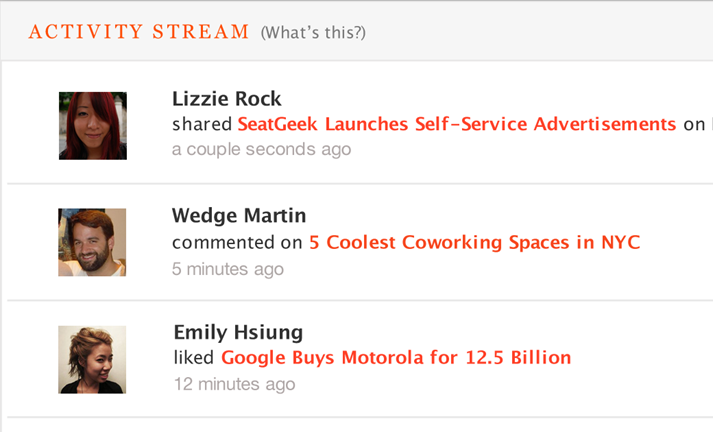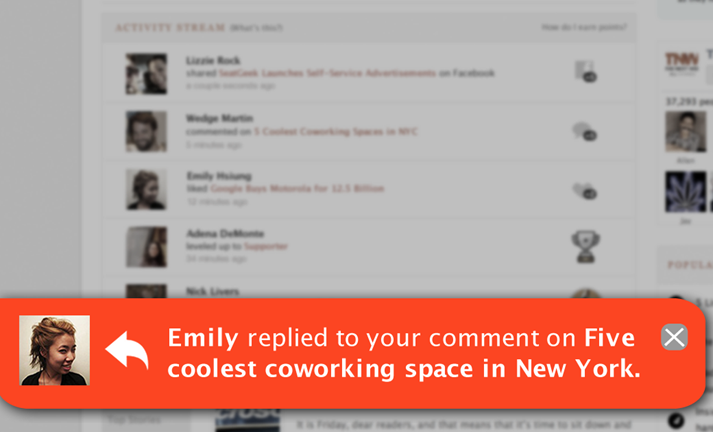It’s been a year since social rewards and analytics company, Badgeville took home the prize for Audience Choice Winner at TechCrunch Disrupt 2010. Today, Founder and CEO Kris Duggan spoke at this year’s Disrupt to talk about how far the company has come over the past 12 months. When Badgeville started, he says, it had 4 people, $300,000 in seed funding and 10 beta customers. Now it has 35 full-time employees, has raised $15 million in capital and has 85 paying customers, including big names like NBC, Discovery and Universal Music. It’s also pulling in 5 to 10 million in sales, notes Duggan. Not bad for just one year in.
But in even bigger news, Badgeville is now launching its latest product: Social Fabric, a new technology based on users’ online behavior.
This “behavior graph,” as Duggan calls it, is different from the “social graph” found on Facebook and Twitter, which is limited to a user’s network of friends. It’s also more advanced than the “interest graph” on Facebook, where the feedback loop is as simple as a list of “likes.”
Instead, the behavior graph is built by tracking users’ on-site activity, which can include virtually anything a publisher wants to track, like clicking a link, reading an article, commenting, liking, replying to another comment, or sharing, for example. But it’s not limited to only content-producing websites. Retailers can use Social Fabric, too, to track activity related to purchases, recommendations, referrals and more. Even enterprise application makers could leverage Social Fabric to track internal activity, like a closed support ticket or users who added answers to a help site’s Q&A section.
There are three main components to Social Fabric: activity streams, social notifications and alerts, and the ability to follow people and objects.
The activity stream functions as sort of like a behaviorally-based, site specific version of Facebook’s News Feed. It shows users a stream of activity related their interests, including what your friends have been doing on the site – what they’ve been reading, commenting on, liking, etc. It can show you who has responded to a comment you left, or what users seem to like the same content as you do. The options, again, are up to the publishers themselves.
Badgeville is currently working on improving the filtering algorithms for this stream, to better highlight the activity that would be most interesting to a given user. Tasked with the algorithm improvements is Tim Piatenko, a developer who knows a little something about the matter, having previously worked on analytics at social gaming company Zynga.
Another piece to the new Social Fabric system are the real-time alerts, which pop in (usually at the bottom of the page) to show you this same activity as it happens, while you’re browsing the website. The end result is a more engaging experience for users, while also providing the site’s publisher with a more detailed analysis of user behavior.
The third and final piece to Social Fabric is the “Follow” button which, unlike on social networks, can be applied to other things besides just people. Users can follow topics, videos, articles, or any object that can be tracked.
So why is a gamification company delving into social mechanics? Were badges not enough to fully engage users? As it turns out, it’s not a simple either-or situation. Adding social activity to the already-present game mechanics in Badgeville’s core product, helps to deliver better and more addictive on-site experiences, as the game-related activity becomes just another interest that can be tracked.
Duggan says Badgeville already has half a dozen companies planning to implement Social Fabric over next week or two, so stay tuned.



